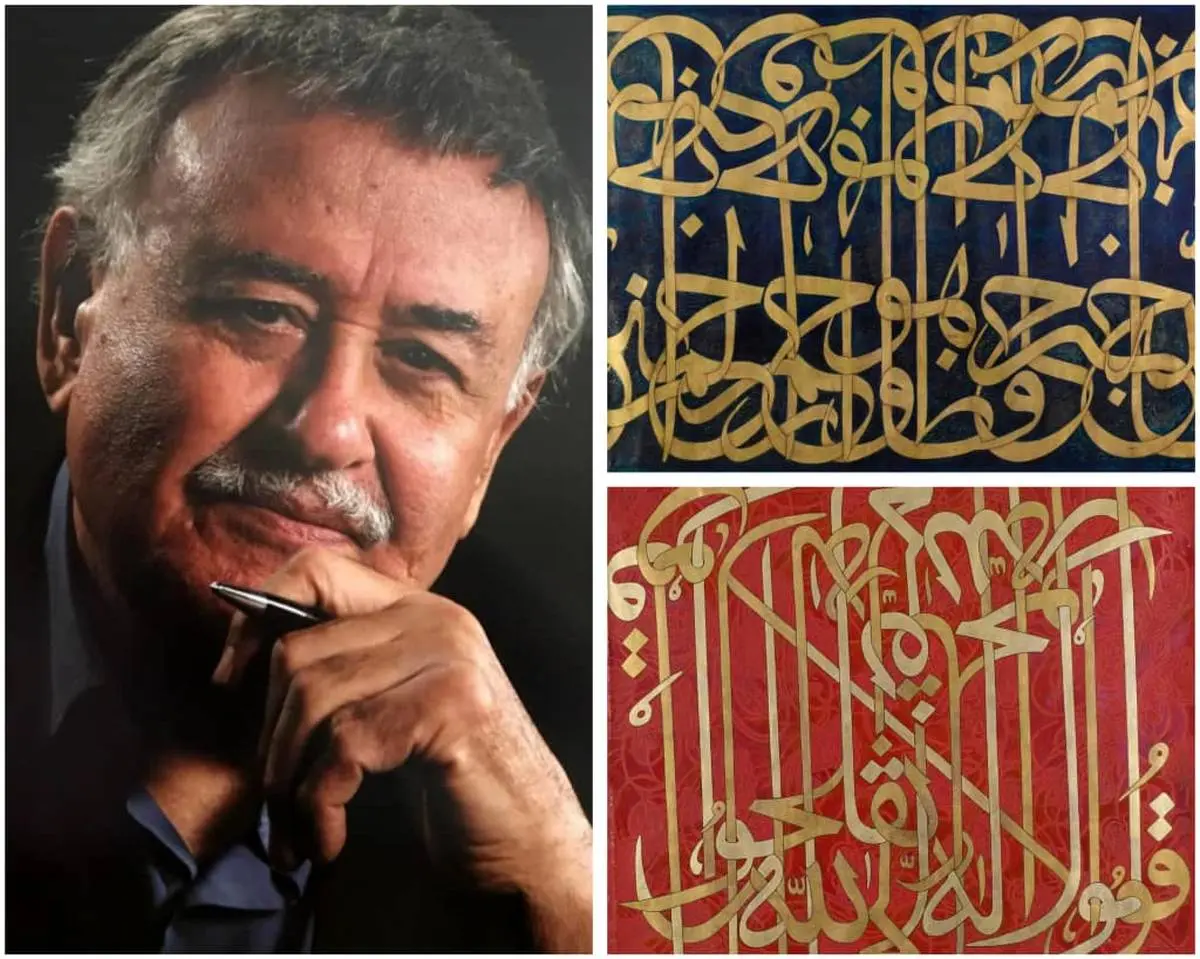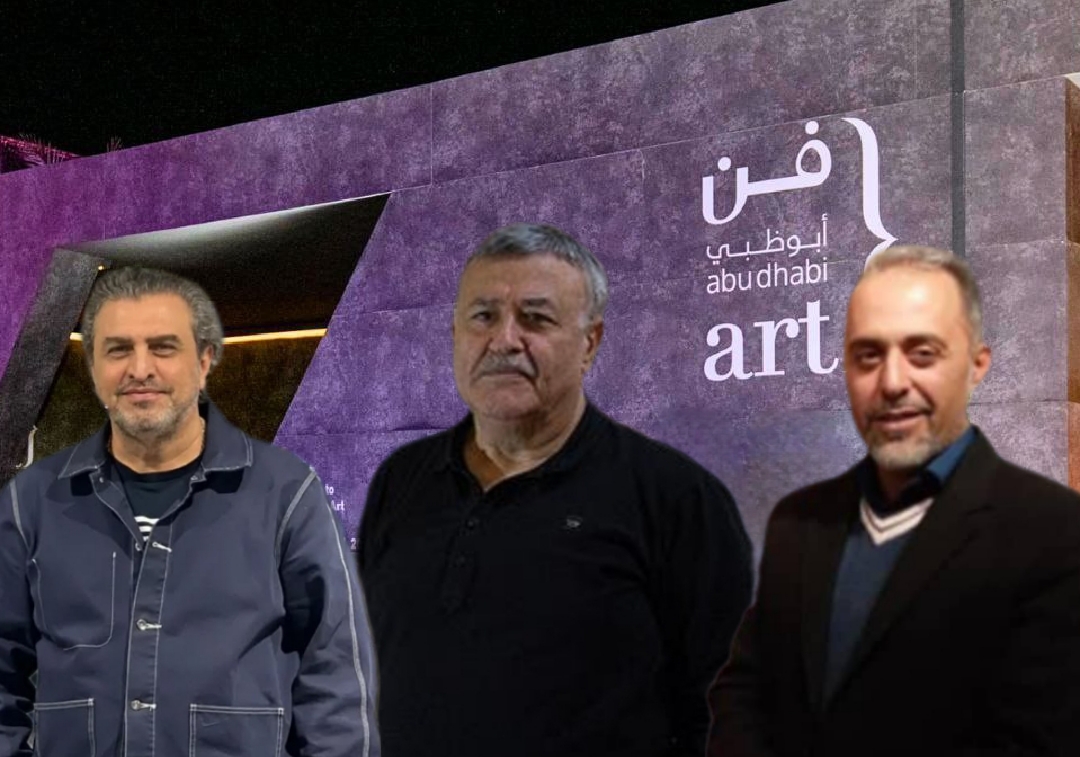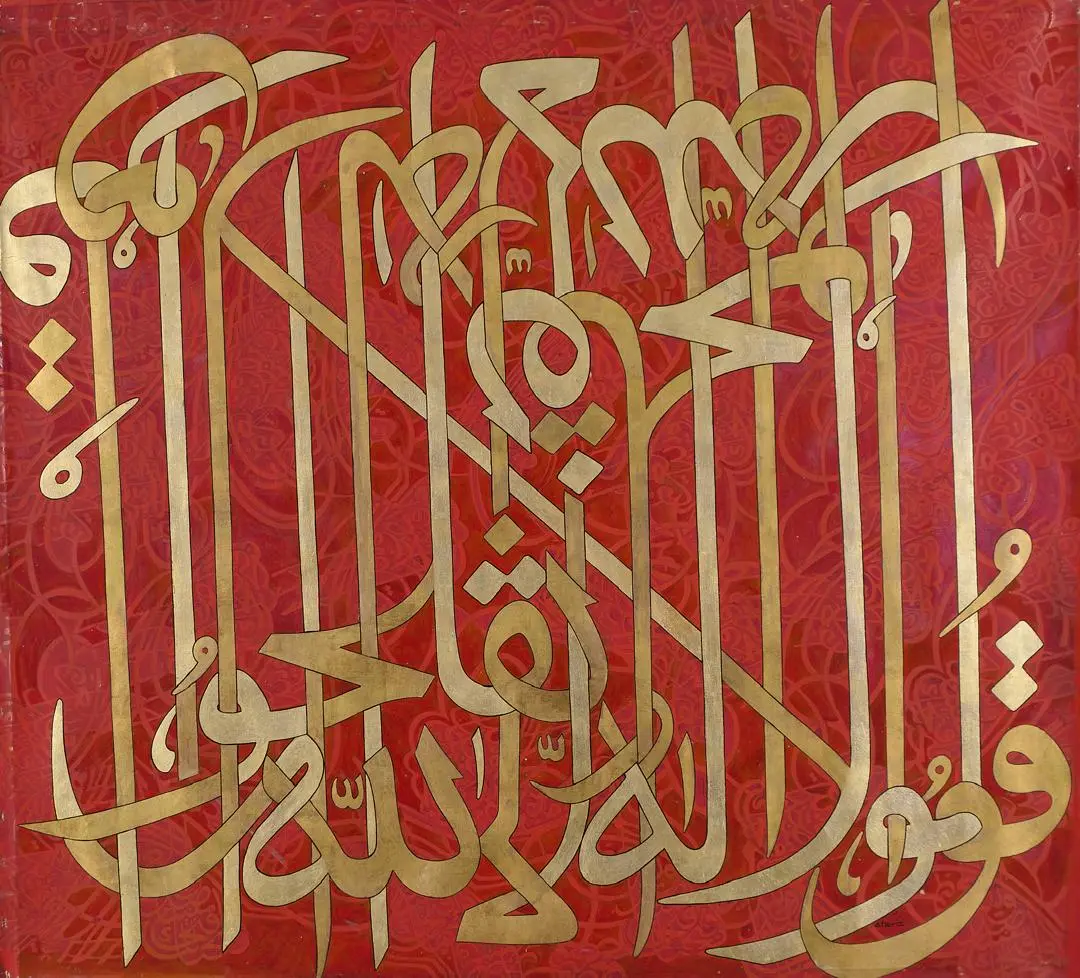
Sadegh Tabrizi and the Metaphysics of Islamic Script at the 17th Abu Dhabi Art / Photos
The two remarkable calligraphic paintings by Sadegh Tabrizi (1939–2017) currently on view at the 17th edition of Abu Dhabi Art, presented by Sohrab Gallery, are emblematic works from a period in which Tabrizi liberated the script from the confines of text and transformed it into a visual symphony. In these canvases, color, line, texture, rhythm, and spirituality intertwine so seamlessly that the viewer encounters both an aesthetic experience and a contemplative one
ArtDayMe : Under the curatorship of Mehrdad Fallah and Shahin Torkaman, Sohrab Gallery is presenting a dedicated showcase of twelve significant works by Sadegh Tabrizi (1939–2017) at the 17th Abu Dhabi Art.
This essay examines two large-scale calligraphic paintings whose monumental presence has astonished visitors at the gallery’s booth. Even these two examples alone demonstrate how Tabrizi fused the spirit of Iranian–Islamic calligraphy with the formal language of contemporary art to create a bold and innovative visual structure that reshaped the artistic landscape of Iran and, indeed, the Middle East.

The two canvases—one set against a deep red ground, the other against a lapis–blue field—belong to a mature and highly personal phase in Tabrizi’s practice, a period in which “script” becomes not merely a carrier of meaning but an architectural, volumetric, and fully pictorial element.
A defining feature of both works is the vertical, column-like structure of the golden forms. By elongating the letters into tall, continuous silhouettes, Tabrizi generates a visual lattice that is meant not to be “read” in the conventional sense but to be seen, followed, and experienced.
Here, the letters take on an architectural function: they resemble columns, supports, and arches familiar from the spatial logic of Islamic architecture.
Curves, knots, interwoven connections, and rhythmic repetitions evoke the aesthetics of the Saqqakhaneh movement, Safavid mosque inscriptions, and Qajar scrollwork.
The density and elongated ascenders intensify a sense of elevation, transcendence, and upward movement—a spiritual motif deeply rooted in Islamic calligraphic tradition.
In this realm, the “word” becomes “form”; meaning does not lie on the surface but dissolves into the structured fabric of the letters themselves.
Sadegh Tabrizi and His Transformed Thuluth
At first glance, the two works appear closely aligned with Thuluth script: tall vertical strokes, broad arches, continuous connections, rhythmic accents, and an architectural presence—all derived from the logic of classical Thuluth.
Yet they are not Thuluth in the traditional sense:
• Tabrizi does not adhere to the proportional and mathematical rules of classical Thuluth.
• While Thuluth is defined by clarity and disciplined legibility, these works are free, layered, and experimental; the letters interlace to the point where “single reading” becomes secondary.
• The golden lines function as pictorial forms rather than traditional writing.
• The composition is not calligraphic in method but entirely painterly and modern.
These works should therefore be read as calligraphic paintings rooted in Thuluth, yet representing a transformed, volumetric, and highly expressive variation unique to Sadegh Tabrizi.
Color and Tonality: Ritual Red, Celestial Lapis

The Red Composition
The saturated red ground evokes ritual, vitality, blood, passion, and sanctity—a duality deeply embedded in Iranian visual culture, where red simultaneously embodies festivity and mourning.
Gold against red follows a long tradition in Iranian art, from lacquer bindings to illumination and tilework. Subtle underlying motifs enrich the surface, preventing the work from becoming visually flat.

The Lapis–Blue Composition
The deep blue signifies introspection, spirituality, and the Iranian sky.
Gold on blue recalls the color harmonies of Persian manuscripts and the mihrabs of Ilkhanid and Timurid architecture.
The chromatic contrast suggests light emerging from darkness, with the golden letters floating like luminous symbols across an infinite field.
In both works, color acts not as background but as a participant in meaning and emotion.
Close observation reveals layered grounds: faint, repetitive motifs reminiscent of carpet patterns or traditional arabesques and khata’i designs. This hidden texture invites the viewer into a search for layered meaning—precisely what Tabrizi pursued: a dialogue between surface and depth.
The gold strokes bear the trace of the hand—slight shadows, variations in pressure—giving the paintings a human, breathing quality.

Beauty Within Complexity
Each composition is built upon repeating rhythms and intersecting patterns.
Though seemingly decentralised, both works are tightly structured around vertical axes.
Curves and waves guide the viewer’s gaze in a controlled choreography—from top to bottom, left to right, then back to the center.
This is the essence of Iranian decorative logic: intelligent decentralization and serenity within complexity—a language Tabrizi mastered.
The difficulty of deciphering the inscriptions is intentional; Tabrizi’s aim is contemplation, not rapid reading.
Meaning resides not in complete sentences but in the spirit of the words, in their form, and in a visual cosmology of script.
Sadegh Tabrizi must be regarded as one of the foundational figures of calligraphic painting—a pioneer who introduced script as form and volume into painting, merged Western modernism with Iranian visual traditions, and used ornament not as decoration but as a vessel for spiritual and ritual concepts.
These two works at Abu Dhabi Art demonstrate how, in his later years, he achieved a fully personal language—one that honors Iranian heritage while engaging fluently with the global conversation of contemporary art. Their presentation on an international platform such as Abu Dhabi Art reaffirms Tabrizi’s stature as a seminal figure in Middle Eastern art and highlights the enduring significance of Islamic calligraphic aesthetics in the region.

LEAVE A RELPY